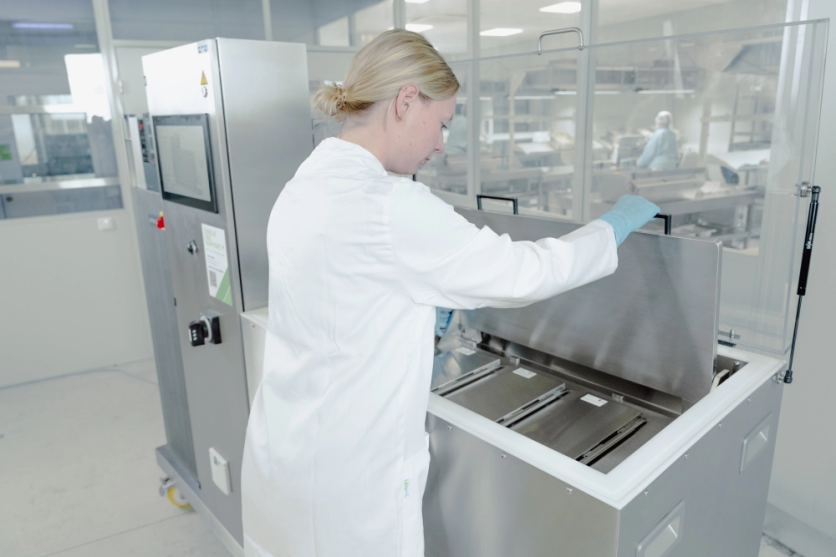
Cell banks are generally known for various fields of application - while many are familiar with the concept of freezing cells for reproductive purposes, others may have come across cell banking in the context of stem cell preservation.
What might be less known, though, is the fact that cell banking is involved in the development and production of groundbreaking pharmaceutical products, used to treat medical conditions like cancer or autoimmune diseases.
But how do cell banking and respective technologies contribute to such medical achievements? To answer this question, one must first take a look at what characterizes cell banks.
Cell banks - in a nutshell
The term "cell bank" refers to an entity of specific cells, preserved ex vivo (outside a living organism) for future use.
Considering how diligently cells have to be dealt with, and how sensitive to thermal and physical stress they are, cell banks are usually maintained by freezing cells to ultra-low temperatures. This process is also known as cryopreservation, keeping cells at temperatures below -150 °C (-238 °F) to maintain their functionality.
But what cells are worth such efforts to keep them viable? Well, as already mentioned, both sperm cells and ovarian tissue are stored in cell banks, e.g. when a patient's fertility might be impacted due to illness or medical treatments. But also stem cells frequently undergo cryogenic freezing and storing processes, especially to be applied in regenerative medicine, repairing damaged tissues and organs.
An exciting field of application of cell banking with groundbreaking innovations in the past few years lies in the production of biopharmaceuticals. With the rise of personalized medicine, where products like antibody therapies are tailor-made for individual patients, along with novel approaches in areas like vaccine development, a constant supply with cellular material - such as mammalian cells, but also yeast or bacterial cells - is crucial for the pharmaceutical industry.
Developing drugs - cells make all the difference
So far, so theoretical. Let us take a look at how cell banks are practically involved in drug development and production.
Depending on specific manufacturing requirements and the desired results, different cell types are eligible to establish a cell bank. For this purpose, both non-mammalian cells (such as bacterial, yeast, plant or insect cells) and mammalian cells are used, the latter of which can be further categorized into human cell lines and non-human cell lines - e.g. Chinese Hamster Ovary cells (CHO cells).
The nomenclature of cell banks at different production stages already gives a clue to what characterizes them and their role at a specific stadium of pharmaceutical research and manufacturing, irrespective of the cell type they are based on. In general, one can distinguish between four different types of cell banks:
Research & Development cell bank (R&D CB)
Master cell bank (MCB)
Working cell bank (WCB)
End-of-production cell bank (EoP CB)
The process of cell-based developing and manufacturing pharmaceuticals - e.g. a viral vector vaccine - typically starts with a Research & Development cell bank. It serves to identify the ideal setup of a cell bank that is able to produce a biopharmaceutical product with the desired qualities, and results in a Master cell bank.
A Master cell bank functions as a blueprint to generate so-called Working cell banks, which are then used to produce larger amounts of a distinctive pharmaceutical product. They are the actual workhorses in biopharma manufacturing, from small to large scale production. And once a production line has been concluded, an End-of-Production cell bank is established, usually for documentation purposes.
Cell banking brings novel therapies within reach
Cell-based therapies are becoming increasingly essential in healthcare systems worldwide. Several novel therapeutic approaches to treat and/or cure various cancer types, infectious diseases or autoimmune disorders involve cell banks, either to be administered as cell therapies or as expression systems for therapeutic proteins.
Among others, vaccine development is a pharmaceutical area in which cell banks have gained significant importance. Innovative mRNA vaccines and viral vector vaccines involve cells as expression systems to produce bioengineered proteins as their central components. But viral vectors may also be used in the context of gene therapies, delivering a gene of interest into a patient's body. This technique is being intensely studied to treat diseases like cancer, diabetes, or cystic fibrosis.
But there is even more: Recombinant antibodies and other proteins are used both as diagnostic and therapeutic tools, valuable in the treatment of different cancer types and infectious diseases. And yet again - these biopharmaceuticals are produced in cellular expression systems.
However, these are only a few illustrations of innovative therapies that are based on cells in their production processes or mechanisms of action. And with ongoing research in fields like personalized medicine, there is an industry-wide excitement over what else cell banking should allow to be achieved with.
ⓒ 2026 TECHTIMES.com All rights reserved. Do not reproduce without permission.




